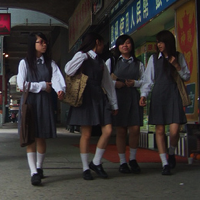China's long-awaited census results, finally released last week, put the Chinese population at 1.37 billion, an increase of only about 74 million people over the past decade. That represents a low annual growth rate of 0.57 percent, which has resulted in the premature aging of China: Those older than 60 now account for more than 13.3 percent of the population, while those younger than 14 make up 16.6 percent.
But probably the most unwelcome aspect of the census results is that China's sex ratio at birth has risen once again. There are normally between 105 and 107 baby boys born for every 100 baby girls, but the 2010 census reports that the ratio in China is now 118.06, up from 116.86 in the previous census taken in 2000. In announcing these results, the head of the China's National Bureau of Statistics remarked, "The gender ratio . . . was still beyond the normal range, and we must attach great attention to this problem and take more effective measures to promote sex equality in terms of employment and salary, while caring more for girls."
Unfortunately, therein lies the rub: China has already spent tremendous resources since 2000 on trying to normalize the birth-sex ratio, a feat that was supposed to be accomplished by 2010. It implemented the Care for Girls program, by which the government provides parents who only had daughters with a small old-age pension, while also waiving school fees and providing priority access to university admissions. Various provinces enacted even stricter measures, including banning ultrasound imaging after 14 weeks of gestation, requiring a panel of three doctors to sign off on the abortion of female fetuses and offering large rewards for information on illegal mobile ultrasound laboratories. Billboards and signs throughout major cities and the countryside exhort citizens to value their daughters as much as they value their sons. China even tried experimenting with uxorilocal marriage, whereby the groom marries into the bride's family and provides for her parents in old age, with the children taking the mother's surname.

